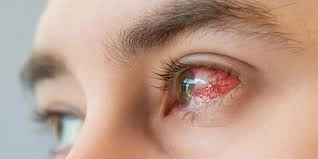
Keratitis vs. Dry Eye: What’s the Difference and How to Treat Them? – With Dr. Mohamed Elkhawaga
Published on: 2025-06-23 | Written by: Dr. Muhammad Al-Khawaja, Consultant and Lecturer of Ophthalmology
Dr. Mohamed Elkhawaga, Consultant in Ophthalmology and Pediatric Ophthalmology & Strabismus, is one of the leading experts in diagnosing and treating various eye conditions, including the common issues of keratitis and dry eye. In this article, he explains the difference between the two and how to manage each one effectively and safely.
What is Keratitis?
According to Dr. Mohamed Elkhawaga, keratitis is an inflammation of the cornea, the transparent front part of the eye. It may be caused by an infection (bacterial, viral, fungal) or direct injury, and it is often associated with improper contact lens use.
Symptoms:
-
Severe eye pain and redness
-
Sensitivity to light
-
Excessive tearing
-
Blurred vision
Causes:
-
Microbial infection
-
Injury or foreign body
-
Chemical exposure
-
Contaminated contact lenses
What is Dry Eye?
Dr. Mohamed Elkhawaga explains that dry eye occurs when the eyes do not produce enough tears or when tears evaporate too quickly. It is often a chronic condition.
Symptoms:
-
Burning or stinging sensation
-
Feeling of a foreign object in the eye
-
Eye fatigue and intermittent blurred vision
Causes:
-
Prolonged screen exposure
-
Aging
-
Certain medications (e.g., antihistamines)
-
Thyroid or autoimmune disorders
Key Differences Between Keratitis and Dry Eye:
| Factor | Keratitis | Dry Eye |
|---|---|---|
| Cause | Infection or direct trauma | Tear deficiency or evaporation |
| Pain Level | Severe | Mild to moderate |
| Vision Clarity | Heavily affected | Temporary blurriness |
| Treatment | Antibiotic/antiviral drops | Lubricating drops, lifestyle changes |
Treatment Options
For Keratitis:
-
Prescription antibiotic or antiviral eye drops
-
Discontinuation of contact lenses
-
Regular follow-up to prevent complications
For Dry Eye:
-
Artificial tears and lubricating eye drops
-
Punctal plugs in some cases
-
Light-based treatments like IPL when needed
Dr. Mohamed Elkhawaga emphasizes the importance of early diagnosis and differentiating between the two conditions to choose the proper treatment plan and avoid complications.
When to See an Eye Doctor?
-
If you experience severe pain or sudden vision changes
-
If symptoms persist for more than 48 hours despite home care
-
If there’s eye redness with discharge or strong light sensitivity
Conclusion:
While the symptoms may appear similar, keratitis and dry eye differ significantly in cause and management. Dr. Mohamed Elkhawaga stresses that accurate diagnosis and consistent follow-up are essential for maintaining healthy vision. Don’t hesitate to consult an eye specialist if you experience any unusual symptoms — early care leads to better outcomes.

